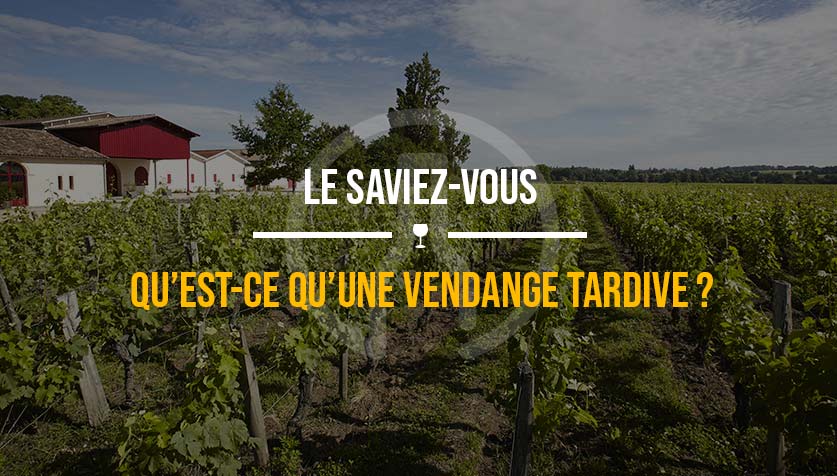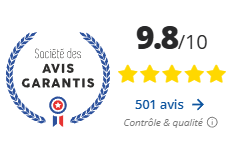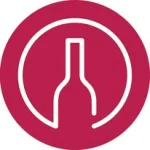Everyone has tasted a bottle of Gewurztraminer Vendange Tardive as an aperitif or to accompany foie gras at Christmas, without really knowing what's behind it. Of course, all Vendange Tardive wines have one thing in common: they have that sweetness, that gourmet taste that appeals, or has appealed, to each and every one of us.
In French, vendanges tardives are wines whose grapes are harvested late and overripe, resulting in grapes that are sweeter and higher in alcohol. There are 3 appellations in France that can use the term vendange tardive (VT).
First of all, Alsace, where the VT label has been authorized since 1984. Grapes must be overripe. Chaptalization (adding sugar) is forbidden, and depending on the grape variety used, the gram of sugar per liter will be different. A minimum of 243 grams of sugar per liter is required if the grape variety used is Gewurztraminer or Pinot Gris, and 220 grams of sugar per liter if it is Riesling or Muscat.
Then there's Jurançon, where chaptalization is also forbidden, plus the obligation to harvest by hand. The amount of sugar is also measured, as it will be mandatory to have 281 grams of sugar per liter to claim the Jurançon appellation.
For the record. AURANCON AOC will always be sweet, because if it's a dry wine, the appellation will be JURANCON SEC.
And finally, the last appellation to be awarded the VT label is none other than AOC Gaillac.
The specifications were validated in 2011. The first vintage will therefore be 2012. Its specifications require, among other things, a yield of 25 hectoliters / hectare (which is low) and a minimum of 281 grams of sugar per liter.
The Clos Jebsal Pinot Gris is a bit special. These are often the earliest plots on the estate, where the first flowers appear when others have yet to show the tips of their stems. In some years, the grapes reach such a high level of ripeness that they contain too much sugar, forcing the estate to vinify them as "noble grain". This is similar to the late harvest, but with a higher sugar content. The 2015 vintage is a great success for the estate, but will need a little more time to reveal its full complexity. After 8-10 years of cellaring, Clos Jebsal develops mineral and stone notes, with a fruity, apricot finish. A lovely discovery that will take patience to discover.
As with the Pouilly and Sancerre vines, Benjamin Daguenau inherits a small 3-hectare estate planted on clay and silica soils. With great finesse, the petite baie de manseng delivers notes of exotic fruit and spice, with a lovely freshness and remarkably controlled sweetness.





![✨ Comptoir des Millésimes honors Champagne's great winemakers ✨[LINK TO THE ORGANIC CELLAR]We've selected 11 exceptional estates that reveal the full richness of Champagne terroir through unique, refined cuvées. Hugues Godmé - In Verzenay, this family-run biodynamic estate offers precise, vibrant champagnes with a beautiful mineral tension.Egly-Ouriet - A benchmark for the Montagne de Reims, its powerful champagnes, aged for long periods in barrel, impress with their complexity.Moussé Fils - In Cuisles, the Meunier grape is king. Pertois-Moriset - Pure, taut Chardonnay Grands Crus for lovers of chalky finesse. A fine address in Mesnil-sur-Oger.Geoffroy - In Aÿ, this domaine produces fine champagnes, carefully crafted and barrel-aged to reveal the full complexity of the terroir.Larmandier-Bernier - Biodynamic viticulture, exceptional parcels and purity. Crystal-clear, intense champagnes for connoisseurs.Roger Coulon - Eight generations of expertise at Vrigny. Balanced, subtle and elegant champagnes.A. Bergère - In Avize, a dynamic house offering expressive, fruity and accessible cuvées.Adrien Renoir - A promising talent from Verzy, he produces fine, complex champagnes with a true sense of terroir.De Sousa - Emblematic house in Avize. Richness, depth, long ageing: Chardonnay at its peak.Pierre Paillard - In Bouzy, the family magnifies Pinot Noir with vinous, racy and sincere cuvées.📦 Order now on our website#ComptoirdesMillésimes #Champagne #VigneronsIndépendants #GrandVin #ChampagnesdeTerroir #LivraisonRapide](https://www.comptoirdesmillesimes.com/blog/wp-content/plugins/instagram-feed/img/placeholder.png)